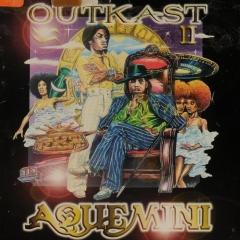
Yet nothing could have prepared fans for Hill’s solo album, The Miseducation of Lauryn Hill. Radio listeners were familiar with Hill from her Grammy-winning work as a member of Fugees, the pioneering conscious rap trio from New York. But it was triple-threat singer/songwriter/rapper Lauryn Hill who would reap the most critical plaudits that year. “No pager, no celly, no drop-top Benz-y/I came to bring your phony hip-hop to an ending …” House of ‘98 From music to fashion, a look at the culture in the year of ‘The Last Dance.’ See MoreĬertified gold for sales over 500,000 units, Moment of Truth helped set the agenda for rap in 1998. Accompanied by producer/arranger DJ Premier, rapper Keith “Guru” Elam spit rhymes so perfectly articulated, listeners could discern every syllable of his anti-materialist lyrics: The group’s 1998 album Moment of Truth featured meditations on God, unity, black empowerment and the pursuit of knowledge. Ironically, one of the acts leading the conscious rap charge was the Boston-based duo known as Gang Starr. Later artists surfaced to challenge the mercenary and counterproductive gangsta narrative. were celebrated as martyrs, rappers who brought unique perspective and sensitivity to gangsta rap. Like Buddy Holly, Jimi Hendrix and their other pop forebears, Shakur and The Notorious B.I.G.

were caught in the crossfire of this madness, but their deaths just may have helped transform rap into the cultural juggernaut it is today.

From ‘Miseducation’ to Miss Lauryn Hill.Seemingly overnight, rap became almost solely about “gettin’ paid,” with many artists approaching music as the recorded equivalent of Hollywood shoot ‘em ups - works that cared less about detailing the inner-city experience, and more about celebrating violence and black market capitalism. Increasingly influenced by the drug trade and the relentlessness of a growth-oriented American economy, hip-hop began embracing a “keep-it-real” ideology where money and hustling were exalted over all else, even human life. Then, gangsta ideology took a dangerous turn. Nowhere was this more evident than in 1992 when presidential hopeful Bill Clinton solidified support among minorities and young adults with a blackified saxophone performance on The Arsenio Hall Show. Almost everywhere you looked, the products of African American culture were being fervently adopted and mimicked. N.W.A’s triumphant chart performance served as a metaphor for black culture at the outset of the ’90s. Initially, the music was hard to dismiss because melodramatic revenge fantasies like N.W.A.’s “F- tha Police” were peppered with brutally elucidating insights into urban life. Hip-hop started out in the late 1970s as a symbol of African American expression and empowerment, spawning independent, black-owned record labels, including Sugar Hill, Def Jam, Death Row, Bad Boy, Luke, Rap-A-Lot and more.īut the emergence of gangsta rap in the late ’80s changed everything, for better and worse. This is what the rap music scene had descended to by the mid-’90s.

So were two other ’90s musical giants, rappers Tupac Shakur and Christopher “The Notorious B.I.G.” Wallace.īeefs. N.W.A./Ruthless Records founder Eric “Eazy-E” Wright was dead. As 1998 lurched to life, hip-hop’s future was clouded in uncertainty and much of the promise of the ’90s lay shattered in pieces.


 0 kommentar(er)
0 kommentar(er)
